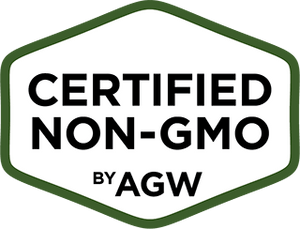- No products in the cart.
A key component of our philosophy at Cahokia is that nutritional information should be accessible and easy to understand for people from all walks of life, not just scientists. I try to encourage those around me not only to make good food choices, but to become better informed about how those choices impact their health. A friend recently asked me, “What is the big deal with whole grains? I know I’m supposed to eat more of them, but I don’t really know why.” We all carry the vague notion that we should be eating more whole grains, whether it’s from a distant recollection of the old food pyramid guidelines, under the advice of our doctor, or something you heard in passing on a morning news program. But most people aren’t aware of what the real benefit of adding whole grains to their diets is, and are therefore less likely to choose them over the refined grain equivalent. I believe that it’s easier to make healthy choices and learn to adapt your palate to the taste of whole grains when you are empowered with this knowledge. It’s important to understand all that whole grains have to offer to your dietary health that refined grains simply aren’t able to deliver.
All grains, whether rice, wheat, or barley, begin as “whole grains” in the field, meaning that they contain all three of their main parts: the bran, germ, and endosperm. Some of these grains will go on to be processed into white rice or white flour by having the bran and germ removed, leaving behind just the endosperm component. The endosperm is the starchy, carbohydrate rich piece that we all know and love. It is tasty and energy dense, but devoid of most nutrients and fiber. Grains are refined in this way to increase their shelf stability, but they are not necessarily the healthiest choice. It’s always a good idea to try and balance the nutrients and energy in your food intake. Calories provide energy, while things like vitamins, minerals, and protein provide the nutrients. While white rice can certainly fill you up and satiate your hunger, it isn’t able to offer the nutrients found in the bran and germ, which are maintained in less processed whole grains such as Cahokia high protein brown rice.
So what makes the bran and germ of whole grains so special? The bran is the outer layer of the grain and is rich in fiber, vitamins, and antioxidants. The bran also gives whole grains their distinctive brown coloring. The germ contains healthy oils which are rich in vitamins and minerals and contributes lots of nutty, complex flavors. Whole grain products have both the bran and germ still intact, so when you eat them, you get all of the benefits of these added nutrients. Some refined grain products are “enriched”, meaning that vitamins and minerals have been added back to the white rice or flour. However, they are not added in the same quantities, and many enriched grain products are still deficient in Vitamin E, B6, and magnesium. The fiber is also not reintroduced, and dietary fiber is a crucial component of our digestive health. Studies have shown that upwards of 95% of Americans are not taking in enough fiber, largely due to our tendency to choose refined grains. Whole grains also fall lower on the glycemic index, meaning they are absorbed and metabolized slower by the body, which keeps insulin levels from spiking and provides greater satiety after a meal. This promotes a healthy relationship between the cells of the body and their sensitivity to insulin secretion. If you’re interested in learning more about the glycemic index, be sure to read my previous article which can be found here.
By choosing whole grain products such as Cahokia brown rice, you are enriching your diet with many of the necessary vitamin and minerals that our bodies need to function at their full capacity. The roles of these nutrients in the body include maintaining vision, bone, and skin health, bolstering the immune system, and regulating metabolism. Eating whole grains also helps you to meet your daily fiber requirements, and fiber is great for gut health and promotes movement in the digestive system. Not only is Cahokia brown rice a whole grain product, it also packs a high protein content- 60% more than other common long grain rice. This high protein characteristic of the rice was naturally isolated using traditional breeding, not through genetic modification. No additives or fortification necessary! All of these qualities make Cahokia brown rice an excellent, nutritionally dense healthy food option that still tastes delicious.
Now that you understand the benefits of whole grains, try integrating some into your family’s weekly meal plan. One of the recommendations of the USDA’s updated MyPlate guidelines is “make half your grains whole”. This is an achievable goal that can help you to transition into cooking with more whole grains. It does take some time to get used to their flavor; I grew up eating white rice and mainly white bread and experienced that adaptation period myself. However, I now find that I really enjoy the wholesome flavor that whole grains can add to a meal. Cahokia’s high protein brown rice can be used as a direct replacement for any of the dishes you currently prepare using white rice. I especially enjoy Cahokia’s brown rice in burritos and enchiladas and find that the flavor lends itself well to Mexican spice. Try experimenting and remember to check out our Recipes link if you’re in need of inspiration!
My name is Dana deRiancho, and I am a student of Louisiana State University’s nutrition and food science program. I am a former professional chef who decided to return to school because I recognized an unmet need in my community. I saw that the people around me wanted to eat better, but didn’t necessarily have the tools or knowledge to do so.















